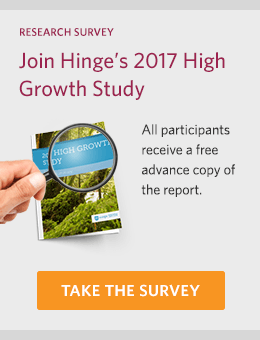You put a lot of time and effort into your website. In order to make sure your efforts aren’t wasted, you want your website to encourage members of your target audience to become leads – who, ideally, you can then nurture into future clients. But what does it really mean to have a lead generation website? And how can you make it happen?
What does lead generation really mean?
It’s not enough to create your website and hope for the best. You need to have strategy behind what you’re creating. Each page of your site should be designed with a distinct purpose and specific goal in mind. With every piece of content you create and every page of web copy you write, consider what end result you hope to achieve and what messages you want your target audience to remember. When all of the pieces of your website work together to achieve a greater goal, your technology firm can enjoy increased lead generation and more opportunities to expand your client base.
Well, almost – it’s not quite that easy. Here are a few more tips for improving your website’s lead generation ability.
3 Ways to Achieve Lead Generation
1) Be Mobile-Friendly
Today, over 80% of professional services buyers will check your website out to evaluate you as a service provider. But these prospects don’t follow a single path to get to your firm’s website. Users are frequently arriving at your website from a device other than a computer, such as their mobile phone or tablet. And because of the rise in mobile’s popularity, more and more technology firms are quickly learning about the importance of using responsive design to make their websites more user-friendly.
Responsive design ensures that your website is scaled to whatever size screen your visitor is using. Rather than having to pinch and zoom to navigate the links and pages of your website, users have a much less frustrating experience. Without responsive design, you run the risk that website visitors will give up and seek out another firm with a more accessible website.
2) Provide a Positive User Experience
It’s important to pay attention to how you are guiding a user through your site. The presentation of your website needs to be intuitive to promote a good user experience and help your target audiences find the information they’re looking for. With clear navigation, headlines, and calls-to-actions as their guides, visitors should easily be able to determine where they want to go on your site and how to get there. Each page also needs to be created with search engine optimization (SEO) best practices in mind so you can help move website visitors down the sales funnel.
 For instance, consider your homepage. That page is often visitors’ first impression of your firm. What actions would they be motivated to take? Is the navigation clearly visible and intuitive? Do your calls-to-action stand out? Does the page clearly convey who you are and what you do?
For instance, consider your homepage. That page is often visitors’ first impression of your firm. What actions would they be motivated to take? Is the navigation clearly visible and intuitive? Do your calls-to-action stand out? Does the page clearly convey who you are and what you do?
Next, consider the visual appeal of your website. People often quickly skim articles and big blocks of text, so a picture can help tell more of your story and capture their attention. Just remember to make sure each image you include on your website stays true to your firm’s brand so your site can remain consistent.
SEE ALSO: 5 Lead Generating B2B Website Trends
3) Offer Educational Content
Today’s buyers want to be educated, not sold to. In fact, in our research with the RAIN Group, we found that the top factor that sets sales winners apart from runners-up is that they educated their buyers with new ideas and perspectives. What’s the vehicle for educating prospects? Content.
Content allows your firm to position itself as a subject matter authority and thought leader and can demonstrate how you can address prospects’ top issues and needs. Combined with SEO best practices, you can help ensure that your audiences easily find your content. Content is also a key way to drive inbound traffic to your website — and new leads.
As you create content, remember to follow these tips to see the most potential success from your efforts. Blog consistently and about topics that are relevant to what your target audience would want to know. If you aren’t sure what types of topics your audience would be most interested in, conduct market research to gain insights. Then, you can use relevant keywords to bring in organic web traffic that already has a vested interest in what your firm has to offer.
Content also provides valuable opportunities to increase your contact list and further nurture leads toward becoming clients. You can provide gated content like eBooks or executive guides to gather email addresses and contact information. You’ll learn more about your website visitors while further establishing your expertise.
When all of these components of your website work together, your lead generation can become a well-oiled machine. You’ll attract attention from an audience that is best suited for your services, making your marketing and lead nurturing more efficient and effective. Most importantly, once those leads start rolling in consistently, you’ll know that the time you’re investing to make your website to best representation of your firm it can be will be well worth the effort.
Additional Resources:
- Download a free copy of the Lead Generating Website Guide.
- Join us on LinkedIn for tips and strategies for creating a high-performance website.
How Hinge Can Help:
Need help with creating a lead generating website? It’s one of our specialties. Learn more about our High Performance Website Program or contact us to learn how we can help put your website to work and turn it into a lead generating machine.

